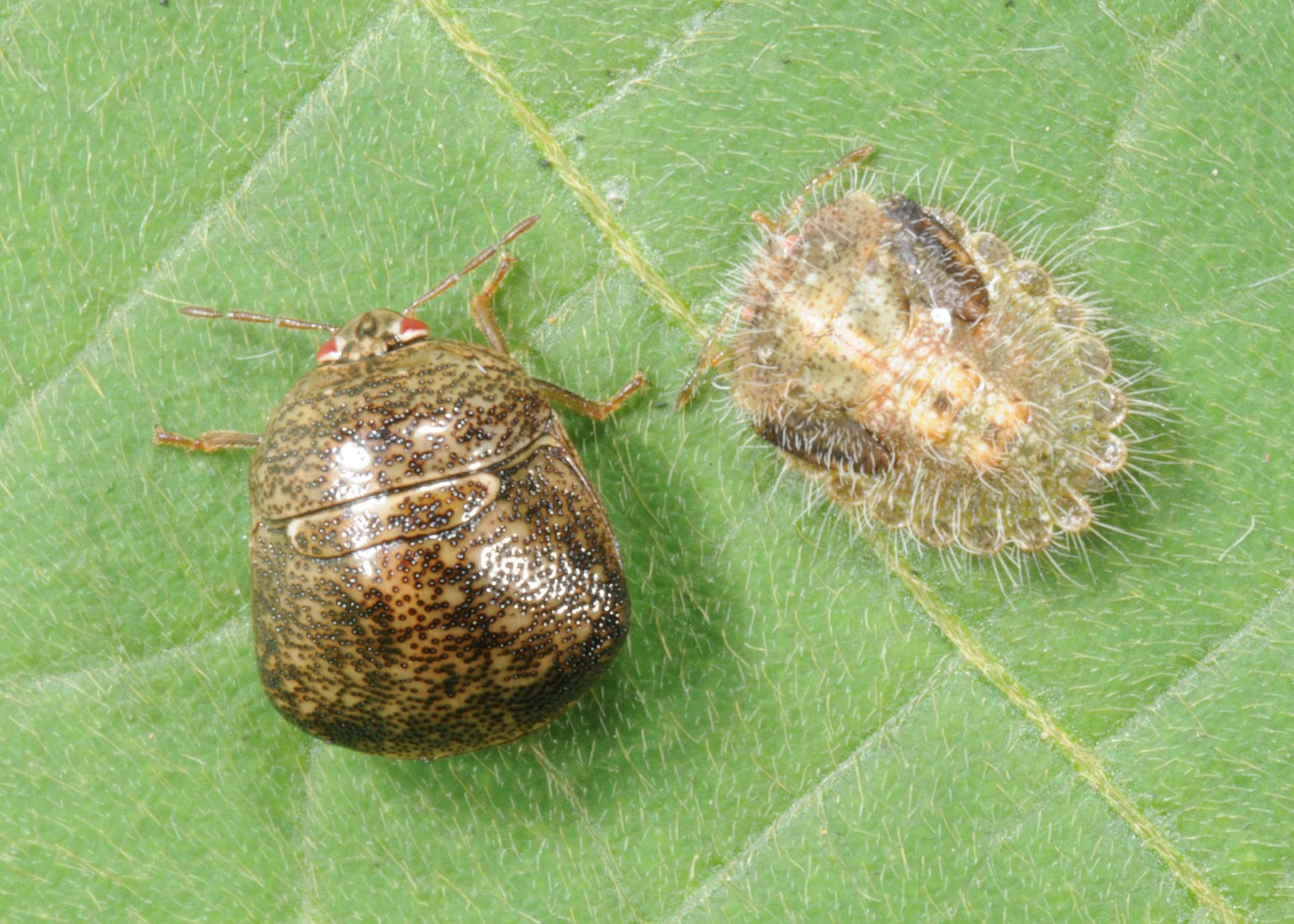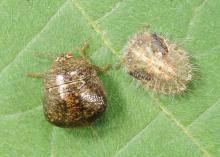Information Possibly Outdated
The information presented on this page was originally released on August 1, 2013. It may not be outdated, but please search our site for more current information. If you plan to quote or reference this information in a publication, please check with the Extension specialist or author before proceeding.
Kudzu bug numbers up, affecting soybeans, houses
MISSISSIPPI STATE -- The kudzu bug is a nonnative insect that is becoming a management headache in soybeans and a pest in houses after just one year in the state.
The insect was first found in Georgia in 2009 and quickly spread to Mississippi and six other Southeastern states. By the end of July, it had been found in 17 Mississippi counties in kudzu, and seven of these counties had the bugs in soybeans.
Angus Catchot, entomologist with the Mississippi State University Extension Service, said the insect has been found in the highest numbers in southwest Mississippi near Warren County.
“Every week or two, someone finds low numbers of kudzu bugs in some other part of the state,” Catchot said. “So far we have low numbers, but they multiply very quickly. In two to three years, they’ll probably be commonplace.”
Catchot called the insects “perpetual hitchhikers.” Most of the places where they were found initially were in heavily travelled areas near gas stations with nearby kudzu plants.
“Once they’ve had a chance to colonize, they start dispersing in high numbers,” he said.
Although they are called kudzu bugs, the pests are equally fond of soybean plants. Control is not difficult, as they can be killed with the same insecticides already used on stinkbugs.
“Our biggest challenge is educational,” Catchot said. “They’re not real damaging in low numbers, so we’re encouraging our growers to not get upset when they see a bunch in the field. Wait until the insects have finished migrating into the field and then spray.”
Catchot said adult kudzu bugs might move into a field for four to six weeks. Spraying too early can be ineffective, as later-arriving insects will reinfect the field.
“We recommend that growers not make an application of insecticide until they scout and find one immature kudzu bug per sweep with the net,” Catchot said. “Once you start picking up immature kudzu bugs, it’s a good sign that the adult migration is over. One well-timed spray should be sufficient.”
This year, growers may not have to make an extra spray application for kudzu bugs if they can time their treatment to coincide with an insecticide application for another pest. When the insect has become fully established across the state, an additional early-season spray may be needed to control the pest.
Catchot said although the pest feeds on the soybean plant, it prefers stems and leaf petioles rather than the fruit.
“That’s why they’re not an immediate danger in low numbers,” he said. “They suck the vigor out of the plant, so it is more of an indirect yield loss.”
Blake Layton, Extension entomologist, said adult kudzu bugs have a unique body shape. From above, they appear roughly square and are about one-quarter of an inch long and wide. Their bodies are a dark brown mottled with a light tan that is covered in tiny pits.
While they are a potential threat to soybeans, kudzu bugs also can become a nuisance in homes.
“They are similar to the lady beetles in that they are attracted to light surfaces and can cluster on buildings in the fall in great numbers,” Layton said.
They do not damage buildings, but they look for ways to enter buildings to overwinter out of the cold.
“Exclusion rather than insecticide use is the best defense,” Layton said. “Seal cracks, crevices and tears in screens over windows and gable or soffit vents. The house may have been sealed tight when it was built, but over time, crevices can develop.”
These insects can enter a one-eighth inch gap, so homeowners should take care to be thorough sealing structures to prevent the insects from swarming indoors.
Often they will swarm on the exterior wall of a building and stay all winter.
“There are contact insecticides that will give short-term control of kudzu bugs clustering on the outside of buildings, but physical exclusion is the best long-term defense against indoor invasion by these or other insects,” Layton said.
And with no natural enemies, kudzu bugs appear to be in the state to stay.





